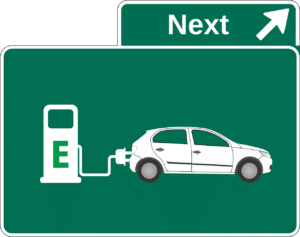In this article, I am going to teach you how to read your VIN. Sounds pretty exciting, right? That’s because it is! Before 1981, there was no standardization of VINs on vehicles. Before that, it could have been ten digits. It could have been five digits. It could have been whatever the car manufacturer wanted.
In 1981, the National Highway Traffic Safety Administration (NHTSA) put their foot down and they said it’s gonna be 17 numbers from now on. And they made all the car manufacturers run with that.
That meant that each number within the VIN meant something specific about that car, whether it was their number in the production line, the color, the trim, the engine size or even the year, it all meant something except for one of those digits.
But we’ll get that in a moment. The letters I, O and Q were never used in the numbers from 1981 until today and going forward. That’s because they get easily confused with the numbers 1 and 0. For the 10th digit of the VIN number, they never use the letters, U or Z, and you’re probably asking why?
I don’t think there was any logic for that reason and if there is, I don’t know. If you know, leave me a comment below!
We are going to decode the following VIN: 1 G N C S 1 8 Z 3 M 0 1 1 5 5 6 1
The first three digits of the VIN are known as the (WMI)
The WMI stands for World Manufacturer Identifier, and that is the country of origin, the manufacturer and division from that manufacturer. In this case, one means the United States, if it was J, it would be in Japan. If it was a 4 it would mean it was in Canada. This is a country where the vehicles made.
The second digit is the. The manufacturers that made the vehicle.
In this case, General Motors has many different divisions. They have Chevy and they have Buick and they have Oldsmobile and several others. This would be General Motors umbrella, where division, which is the third digit, is the more specific Buick, Pontiac, Oldsmobile, whatever it is. In this case, we have the United States, General Motors and Chevy. In this case.
The fourth through the eighth number of the VIN
It’s called The Attributes of VIN. And those include things like safety, engine size, series the vehicle is. In this case, the fourth digit is safety, braking and suspension. So if you have a heavy-duty truck with eight-lug wheels, a real serious towing package as I would say. The fourth digit is the digit that will tell you, hey, this vehicle has like a special suspension and braking package. It also tells things for safety.
If you had special safety restraints system in the car for some reason, the fourth digit would tell you that information. The fifth digit, in this case, an S is the series. In the 1980s, for example, General Motors made full-size trucks that were C and K case series and R and B series. This just basically meant to two-wheel drive a four-wheel drive, but it was several different series.
In this case, we have an S series that happens to be in an S10 series truck, although they don’t usually connect like that. The sixth digit along with the seven-digit is the body style. If it was convertible or two-door or a four-door or whatever that body style is, that is what the sixth and the seventh digit represent.
The eighth digit, in this case, is Z is one of my favorites is the engine size
If you go to a junkyard, for example, and you want to know what engine is under the hood of this car rather than opening the hood, you can reference this guide or do a VIN lookup to get the exact specifications of the engine.
And if you know you’re looking for a Z engine, and you see Z in the eighth digit and boom you know you are getting what you want.
This is really helpful for vehicles that had two different engines during the same year. Like an S10, for example, a blazer, something like that could have a four-point three-liter engine. That was a Z series or W series. And that had totally different parts attached to them. So when you’re buying engine parts for those trucks, you need to make sure, you know, if you have a Z series or a W series engine.
The ninth digit is called a check digit
They call it a check digit because the purpose of it is to check the rest of the VIN to make sure it’s legit.
You do this by putting it through some complex math, which you can find on the Internet. If you go browsing around for it and you hopefully come out with the right number, you input numbers throughout the VIN and through the math, it spits out a number and hopefully, it’s the right one. Hopefully, it’s a three in this case, if it comes out as a five. You know that these other numbers in the VIN, are not legit and someone just made up the VIN. The easiest thing to do is to run the VIN through a VIN decoding service like VINsmart. This will tell you if the VIN is legit or not.
The tenth digit is the year
Which is amazingly helpful if you’re in a junkyard or shown off to your friends or something like that or if you want to seem like your better than them. You can figure out how the years match up to which letters and which numbers by this symbol handy chart. And you’ll always know what year the vehicle is. In this case, the M is in 1991, it’s always 1991.
If you have this chart which you can always reference here. You can always know what year a vehicle is. It’s great when buying a used car or in a junkyard, because you can walk up to a VIN and say, “oh this is 1998 VIN J and you know you have the right or the wrong part.” It’s really really helpful.
The eleventh digit is the plant
That’s where the vehicles made. A lot of Corvettes were made in Bowling Green, Kentucky. And this letter will tell you. Oh, this was a Bowling Green, Kentucky.
Or maybe they were made Lansing, Michigan, or maybe Detroit, Michigan, or, you know, who knows where Illinois. It could be made anywhere. And this is the digital tells you which plant. It was made.
The last six digits are the production line numbers
Most vehicle manufacturers start with the number 1 0 0 0 0 1. That’s what they start with the: last six digits and they go up from there.
This normally is not an important number as far as buying parts or a car unless you have one of those vehicles that changed production specifications like halfway through a production line.
You might have a vehicle that had different mirrors in April of 2004 than it did in August of 2004. If you have one of those vehicles, you need to know this production number. That pretty much wraps up, VINs. Hopefully, you learned some today and enjoyed the article. If you did, let me know in the comments below.
If you need a quick way to decode a VIN or to do a VIN check to check the vehicle history before buying a used car. You can do so by using VINsmart vehicle history services here.
Are you a car dealer? Check out our dealer program!
Did you know vehicle history reports increases the likelihood of a purchase by 90%? Build that trust with VINsmart vehicle history reports!
Featured
Tags
Tags
Newsletter

Matthew Beasley
I am the Director of Marketing at VINsmart and previously worked for Cox Automotive in the marketing department designing advertisements for Autotrade and Mainhiem. I wouldn't call myself an "Automotive Enthusiast"; however, I do love marketing in the automotive industry. I've become an EV junky recently. I am a Tesla owner and have a new found love for advanced technology in automotive.





